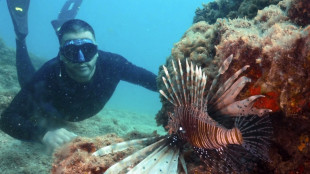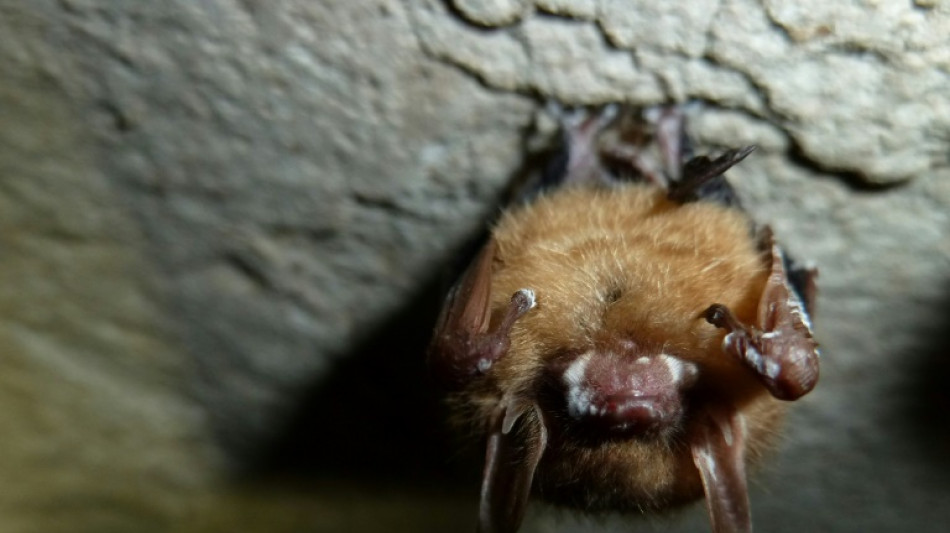
-
 From drought to floods, water extremes drive displacement in Afghanistan
From drought to floods, water extremes drive displacement in Afghanistan
-
Air Canada flights grounded as government intervenes in strike

-
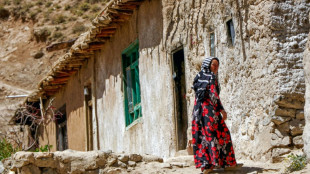 Women bear brunt of Afghanistan's water scarcity
Women bear brunt of Afghanistan's water scarcity
-
Reserve Messi scores in Miami win while Son gets first MLS win

-
 Japan's Iwai grabs lead at LPGA Portland Classic
Japan's Iwai grabs lead at LPGA Portland Classic
-
Trump gives Putin 'peace letter' from wife Melania

-
 Alcaraz to face defending champ Sinner in Cincinnati ATP final
Alcaraz to face defending champ Sinner in Cincinnati ATP final
-
Former pro-democracy Hong Kong lawmaker granted asylum in Australia

-
 All Blacks beat Argentina 41-24 to reclaim top world rank
All Blacks beat Argentina 41-24 to reclaim top world rank
-
Monster birdie gives heckled MacIntyre four-stroke BMW lead

-
 Coffee-lover Atmane felt the buzz from Cincinnati breakthrough
Coffee-lover Atmane felt the buzz from Cincinnati breakthrough
-
Coffe-lover Atmane felt the buzz from Cincinnati breakthrough

-
 Monster birdie gives MacIntyre four-stroke BMW lead
Monster birdie gives MacIntyre four-stroke BMW lead
-
Hurricane Erin intensifies offshore, lashes Caribbean with rain

-
 Kane lauds Diaz's 'perfect start' at Bayern
Kane lauds Diaz's 'perfect start' at Bayern
-
Clashes erupt in several Serbian cities in fifth night of unrest

-
 US suspends visas for Gazans after far-right influencer posts
US suspends visas for Gazans after far-right influencer posts
-
Defending champ Sinner subdues Atmane to reach Cincinnati ATP final

-
 Nigeria arrests leaders of terror group accused of 2022 jailbreak
Nigeria arrests leaders of terror group accused of 2022 jailbreak
-
Kane and Diaz strike as Bayern beat Stuttgart in German Super Cup

-
 Australia coach Schmidt hails 'great bunch of young men'
Australia coach Schmidt hails 'great bunch of young men'
-
Brentford splash club-record fee on Ouattara

-
 Barcelona open Liga title defence strolling past nine-man Mallorca
Barcelona open Liga title defence strolling past nine-man Mallorca
-
Pogba watches as Monaco start Ligue 1 season with a win

-
 Canada moves to halt strike as hundreds of flights grounded
Canada moves to halt strike as hundreds of flights grounded
-
Forest seal swoop for Ipswich's Hutchinson

-
 Haaland fires Man City to opening win at Wolves
Haaland fires Man City to opening win at Wolves
-
Brazil's Bolsonaro leaves house arrest for medical exams

-
 Mikautadze gets Lyon off to winning start in Ligue 1 at Lens
Mikautadze gets Lyon off to winning start in Ligue 1 at Lens
-
Fires keep burning in western Spain as army is deployed
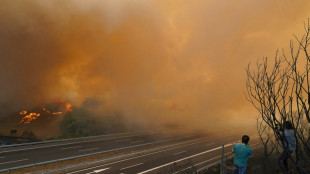
-
 Captain Wilson scores twice as Australia stun South Africa
Captain Wilson scores twice as Australia stun South Africa
-
Thompson eclipses Lyles and Hodgkinson makes stellar comeback

-
 Spurs get Frank off to flier, Sunderland win on Premier League return
Spurs get Frank off to flier, Sunderland win on Premier League return
-
Europeans try to stay on the board after Ukraine summit

-
 Richarlison stars as Spurs boss Frank seals first win
Richarlison stars as Spurs boss Frank seals first win
-
Hurricane Erin intensifies to 'catastrophic' category 5 storm in Caribbean

-
 Thompson beats Lyles in first 100m head-to-head since Paris Olympics
Thompson beats Lyles in first 100m head-to-head since Paris Olympics
-
Brazil's Bolsonaro leaves house arrest for court-approved medical exams

-
 Hodgkinson in sparkling track return one year after Olympic 800m gold
Hodgkinson in sparkling track return one year after Olympic 800m gold
-
Air Canada grounds hundreds of flights over cabin crew strike

-
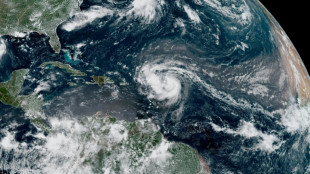 Hurricane Erin intensifies to category 4 storm as it nears Caribbean
Hurricane Erin intensifies to category 4 storm as it nears Caribbean
-
Championship leader Marc Marquez wins sprint at Austrian MotoGP

-
 Newcastle held by 10-man Villa after Konsa sees red
Newcastle held by 10-man Villa after Konsa sees red
-
Semenyo says alleged racist abuse at Liverpool 'will stay with me forever'

-
 In high-stakes summit, Trump, not Putin, budges
In high-stakes summit, Trump, not Putin, budges
-
Pakistan rescuers recover bodies after monsoon rains kill 340
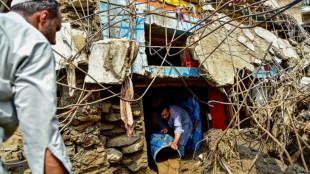
-
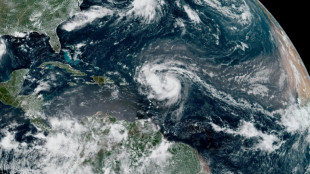 Hurricane Erin intensifies to category 3 storm as it nears Caribbean
Hurricane Erin intensifies to category 3 storm as it nears Caribbean
-
Ukrainians see 'nothing' good from Trump-Putin meeting

-
 Pakistan rescuers recover bodies after monsoon rains kill 320
Pakistan rescuers recover bodies after monsoon rains kill 320
-
Bob Simpson: Australian cricket captain and influential coach


New tools give researchers hope for fungus-ravaged US bats
Standing at a woodland entrance to the world's longest cave system in Kentucky, a park ranger warns those about to enter of an extremely deadly fungus -- not for humans, but for the bat populations it has devastated across North America.
In one of the most significant losses of wildlife in modern history, the fungus, which causes a disease called white-nose syndrome, has killed millions of the flying mammals since arriving in the eastern United States from Europe nearly 20 years ago.
Two decades on, no cure exists. But scientists are finally emerging with potential solutions.
And their research comes as the disease -- which sprouts white fuzz on the bats' tiny noses, ears and wings -- is spreading to the American West.
White-nose syndrome (WNS) was first confirmed at Mammoth Cave National Park in Kentucky in 2013, thriving in the pitch-black, cool conditions of its labyrinthine tunnels, which the group of visitors quickly descended into for their tour.
If WNS seems like a problem just for bats, scientists say, think again. The insect-eating animals play a vital ecological role and their loss is already reverberating.
All of the repercussions are not entirely understood. However in a recent study published in the journal Science, researchers linked the collapse of North American bat populations with higher use of pesticide and increased human infant mortality.
Particularly in the disease's early days, researches witnessed grisly scenes: dead bats clinging to the ceiling next to sick bats, and diseased bats crawling along the floor, especially in the northeast United States.
Further south at Mammoth Cave, located in an extremely cavernous region of verdant rolling hills and forests, bats have tended to head out into the wilderness to die, likely due to warmer winter weather, simply disappearing forever.
- Mass mortality -
The United States and Canada are home to more than 40 bat species, with WNS affecting those that hibernate -- although not all of them.
Counting bats is extremely difficult, but researchers widely agree the disease killed more than 90 percent of the three most impacted species -- the northern long-eared, tricolored and little brown bat which used to be extremely common.
At Mammoth Cave, mass mortality has also occurred among the Indiana bat, the park's cave resources management specialist, Rick Toomey, told AFP.
More than 400 miles (640 kilometers) of mapped passageways wind beneath the park, which Toomey compared to "a plate of spaghetti," attracting visitors who may not have known or been thinking about WNS.
"It doesn't cross my mind often at all, only when someone brings it up like they did today," Makenzie Johnson, a 24-year-old student visiting from Indiana, told AFP after the tour.
- Right tool, right time -
White-nose syndrome is caused by the fungus Pseudogymnoascus destructans (Pd), which infects bats during hibernation, waking them more easily and causing them to use up their energy reserves.
Scientists have been scrambling to find a solution -- so far with only partial results.
"If we can come up with a lot of different tools, and we understand how to use them, and use them in the right places at the right time, we could help get a number of bats through that initial phase of disease when we see high mortality," Michelle Verant, a wildlife veterinarian with the National Park Service, told AFP.
One of those tools is vaccines, which are fairly rare for fungal diseases, but are showing promise with comparatively more vaccinated bats returning to maternal roosts, she said.
According to Jonathan Reichard, assistant national coordinator for WNS at the US Fish and Wildlife Service, various disinfection tools for hibernation sites are being studied.
One is a chemical called polyethylene glycol 8000 that is sprayed in caves while bats are away in summer, reducing Pd's presence. Another is the application of UV light. But scientists warn other organisms can be harmed in the process.
Researchers are also fumigating caves and their bats with volatile organic compounds to slow the fungus's growth. And there is even a probiotic skin treatment, based on naturally occurring bacteria.
A double-stranded RNA application is also now under development, "which is something that can be highly specific to the fungus," Reichard added.
"We've gone from sort of having no idea what was happening to now having a suite of tools relevant for use in different areas and different situations," he said.
M.Betschart--VB


